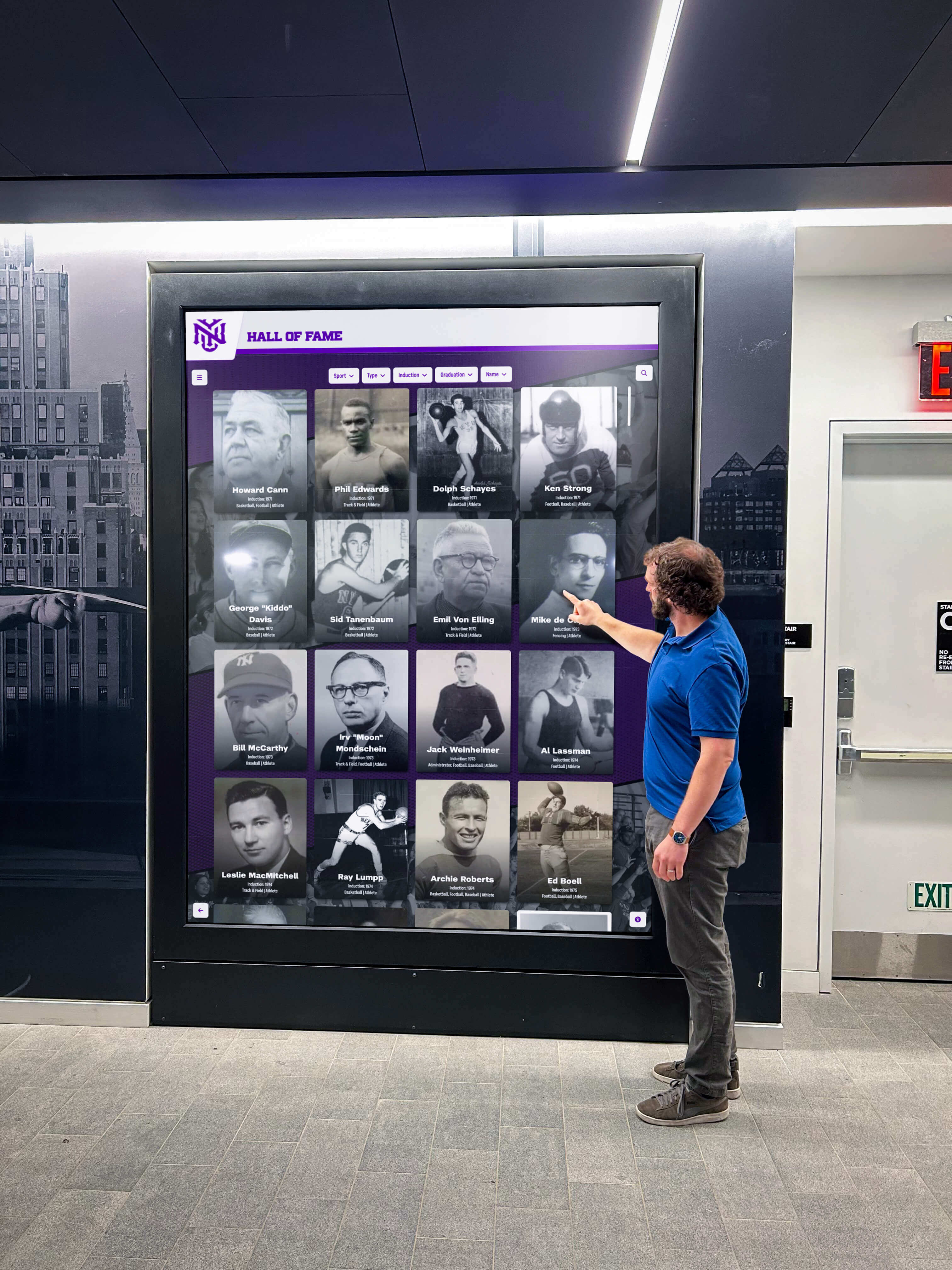Key Takeaways
Comprehensive guide to the World Chess Hall of Fame and how educational institutions and organizations can create engaging chess recognition programs using modern interactive display technology to celebrate excellence.
Chess represents one of the world’s oldest and most intellectually demanding competitive pursuits, with a rich history spanning more than 1,500 years across cultures and continents. The World Chess Hall of Fame in Saint Louis stands as the premier institution celebrating chess excellence globally, honoring legendary players, preserving historical artifacts, and engaging visitors through interactive displays that bring the game’s heritage to life. Schools, chess clubs, universities, and organizations developing their own chess recognition programs can learn valuable lessons from this exceptional institution about combining historical preservation with modern engagement technology.
This comprehensive guide explores the World Chess Hall of Fame, examines its innovative approaches to recognition and engagement, and provides practical guidance for educational institutions and chess organizations seeking to honor their own chess achievers through modern display technology that inspires current and future players.
Understanding the World Chess Hall of Fame
Before exploring how to create effective chess recognition programs, understanding the premier institution dedicated to chess excellence provides essential context and inspiration.
The World Chess Hall of Fame Location and Mission
The World Chess Hall of Fame is located at 4652 Maryland Avenue in the Central West End of Saint Louis, Missouri. Situated across from the Saint Louis Chess Club, the museum occupies a central position in what has become America’s chess capital through the combined presence of these institutions plus major tournaments and world-class players who have made Saint Louis their home.
The museum’s mission encompasses celebrating the history of chess, honoring its greatest players and contributors, preserving significant artifacts and memorabilia, educating visitors about chess’s cultural significance, and engaging communities through interactive programming and exhibitions. Unlike many halls of fame that focus exclusively on inductee recognition, the World Chess Hall of Fame positions itself as a comprehensive cultural museum where achievement celebration integrates with broader educational missions about chess’s role in art, culture, history, and intellectual development.
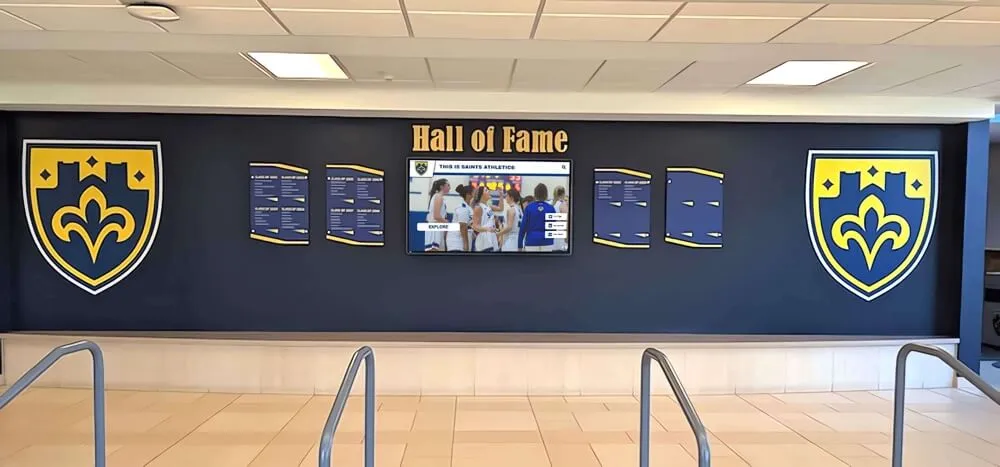
Current Inductees and Selection Process
The World Chess Hall of Fame actually encompasses two separate recognition programs operating under a single institutional umbrella: the World Chess Hall of Fame (international recognition) and the U.S. Chess Hall of Fame (domestic recognition).
World Chess Hall of Fame Inductees:
The World Chess Hall of Fame is governed by FIDE (the World Chess Federation) and recognizes international players who have made exceptional contributions to chess worldwide. As of October 2025, the World Chess Hall of Fame includes 56 members after the 2025 induction ceremony.
The 2025 World Chess Hall of Fame inductees included Pia Cramling of Sweden, who topped FIDE women’s ratings in 1984 and earned her grandmaster title in 1992 after being among the world’s elite female players for over four decades; Vlastimil Hort, one of the top players of his era representing both Czechoslovakia and Germany; and Jan Timman of the Netherlands, one of the world’s top players from the late 1970s through 1990s who reached the World Championship final in 1993 and won prestigious tournaments like Linares in 1988.
U.S. Chess Hall of Fame Inductees:
The U.S. Chess Hall of Fame recognizes American players and contributors who have significantly impacted chess in the United States. After the 2025 induction ceremony, the U.S. Chess Hall of Fame includes 76 members.
The 2025 U.S. Chess Hall of Fame inductee was Bruce Pandolfini, who has played a central role in shaping American chess culture beginning as a match analyst during the 1972 Fischer-Spassky World Championship, then becoming a full-time coach, mentor, and author with over 30 books to his name and involvement in films like Searching for Bobby Fischer and the Netflix series The Queen’s Gambit.
The induction ceremonies for both halls of fame took place on October 11, 2025, as part of the opening ceremony for the U.S. and U.S. Women’s Chess Championships held in Saint Louis.
Museum Exhibitions and Interactive Experiences
What distinguishes the World Chess Hall of Fame from traditional recognition-only halls of fame is its commitment to dynamic, rotating exhibitions that explore chess from multiple perspectives beyond simple player recognition.
Current and Recent Exhibitions:
The museum regularly features exhibitions exploring diverse themes. In 2025, exhibitions have included “Reading Between the Lines: Chess & Literature” exploring connections between chess and literary works, historical chess set displays showcasing artistic and cultural variations across centuries, and thematic exhibitions examining chess in specific contexts like education, politics, or popular culture.
These rotating exhibitions keep the museum fresh and engaging for repeat visitors while demonstrating that chess excellence extends beyond competitive play to encompass artistic expression, cultural significance, and intellectual impact across multiple domains.
Interactive Display Features:
The World Chess Hall of Fame incorporates interactive displays throughout its facilities enabling visitors to actively engage with content rather than passively viewing static exhibits. According to museum descriptions, interactive features include digital displays for each hall of fame honoree allowing guests to browse biographical information, searchable databases enabling visitors to explore inductees by various criteria, and interactive chess stations where visitors can challenge computer opponents or participate in friendly matches.
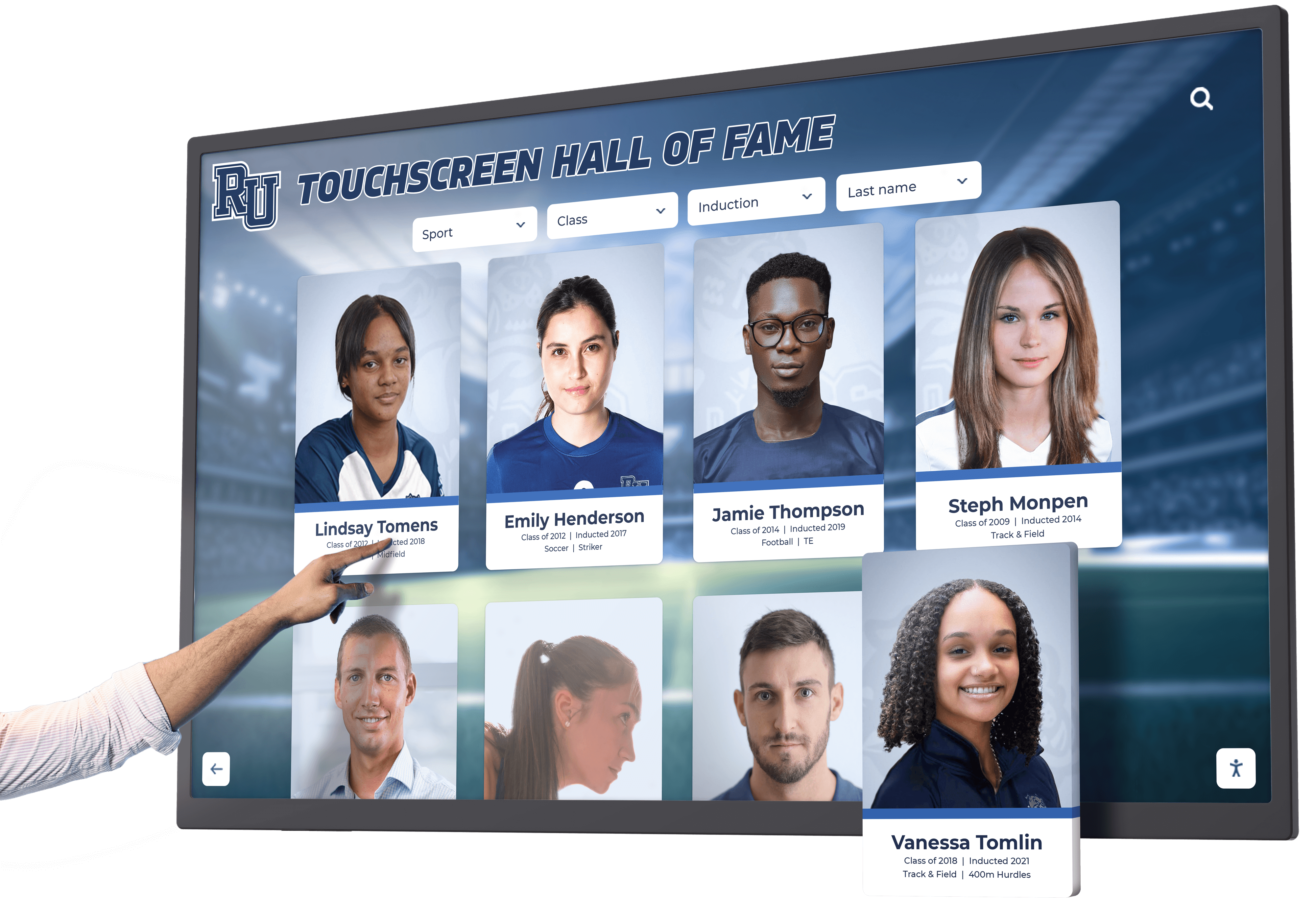
This combination of traditional artifacts with modern interactive technology creates multi-dimensional visitor experiences appealing to diverse audiences from serious chess enthusiasts to families discovering the game for the first time.
The Chess Recognition Challenge for Schools and Organizations
While the World Chess Hall of Fame represents a large-scale institutional approach, schools and chess organizations face similar recognition challenges that modern technology can help address.
Space Constraints in Traditional Chess Recognition
Schools with chess programs and chess clubs typically recognize achievement through traditional methods: trophy cases holding championship trophies, plaques mounted on walls recognizing tournament winners, display boards showing past champions or team photographs, and certificate presentations acknowledging individual accomplishments. These traditional approaches face significant practical limitations as programs mature and recognition accumulates.
Physical Space Consumption:
A school chess program operating for 20-30 years may have hundreds of tournament results, dozens of state champions, and countless individual achievements deserving recognition. Traditional trophy cases can accommodate only limited numbers of trophies before becoming cluttered, wall plaques eventually consume all available display space forcing difficult decisions about which achievements remain visible, and photograph displays of historical teams require substantial wall areas that may not remain available as institutional needs evolve.
Many chess program directors report that the majority of their historical trophies and recognition materials sit in storage rather than on display simply because physical space constraints make comprehensive recognition impossible through traditional means.
Update Complexity:
Adding new chess recognition to traditional displays requires ongoing investment. New trophies cost money to purchase and engrave, plaques require design, production, and professional mounting, and photograph displays need printing, framing, and installation. These recurring costs and administrative burdens mean many programs update recognition only periodically rather than promptly celebrating achievements when they occur, diminishing motivational impact for current players.
Limited Information Capacity
Traditional chess recognition provides minimal context about achievements. A trophy might indicate “State Championship 2023” without explaining the competition difficulty, the players involved, the crucial games that determined outcomes, or the significance of the achievement within program history. A plaque listing state qualifiers provides names but no information about individual players’ accomplishments, playing styles, memorable games, or subsequent chess career development.
This information limitation makes traditional recognition less engaging for visitors who lack context to understand why achievements matter or how they fit within broader competitive landscapes and program traditions.
Minimal Engagement and Inspiration
Static recognition displays receive brief glances from passersby but rarely create extended engagement that actually influences current players or builds genuine appreciation for program tradition. Research on visitor behavior at traditional recognition displays consistently shows average viewing times under 30 seconds in most cases—insufficient to communicate meaningful narratives or create emotional connections that inspire excellence.
Young chess players who might draw motivation from understanding how program legends developed their skills, overcame challenges, and achieved success cannot gain these insights from trophies and plaques that provide only bare facts without compelling stories.
Modern Chess Recognition Through Interactive Displays
Digital interactive displays transform chess recognition from static acknowledgment into engaging experiences that honor more achievers, tell richer stories, and inspire current players more effectively than traditional approaches.
Unlimited Recognition Capacity
The most transformative advantage of interactive hall of fame displays for chess programs is eliminating space constraints entirely. A single touchscreen display can showcase comprehensive profiles for unlimited individuals, teams, and achievements without consuming additional physical space.
Chess programs can finally honor every state qualifier, recognize all tournament victories across weight classes and age groups, document complete program history spanning decades, showcase memorable games and critical positions, and preserve historical context that might otherwise be lost—all within a single display system that occupies just a few square feet of wall space.
This unlimited capacity proves particularly valuable for chess programs because achievement spans multiple dimensions: individual tournament results, team competitions, scholastic rankings, rating improvements, notable games, and tactical achievements all deserve recognition that physical displays cannot practically accommodate.
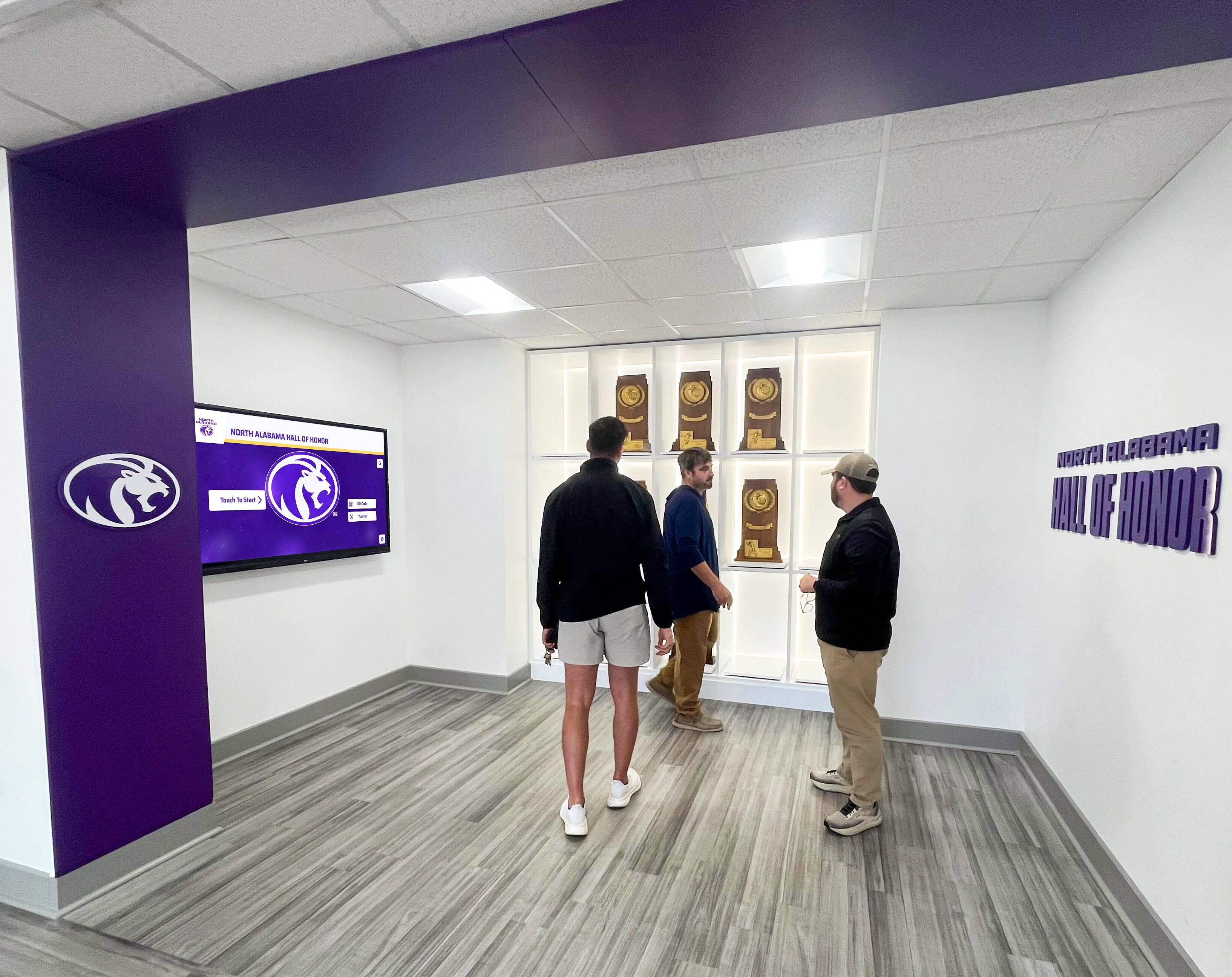
Rich Multimedia Storytelling
Digital platforms enable comprehensive profiles impossible with traditional plaques. A chess champion’s recognition profile might include high-resolution portrait photographs, complete tournament histories showing progression, annotated games highlighting brilliant moves, video analysis of critical positions, statistics showing rating progressions over time, quotes from the player about memorable games, coach testimonials about dedication and growth, and links to subsequent chess careers or life accomplishments.
This multimedia depth transforms simple acknowledgment into compelling narratives that help younger players understand what excellence looks like, how champions developed their skills over time, and what dedication and strategic thinking enabled success. The inspirational value of these rich profiles dramatically exceeds what traditional trophies or plaques can convey.
Interactive Exploration and Searchability
Touchscreen interfaces enable visitors to explore chess recognition according to their specific interests. A visitor might search for a specific player by name, browse state qualifiers from a particular year, filter tournament results by age division or skill level, explore memorable games by opening moves or tactical themes, or discover connections between current players and program alumni.
This personalized exploration creates engagement impossible with traditional linear displays where everyone sees identical presentations regardless of interest. Analytics from schools implementing digital recognition displays show that visitors spend 5-15 minutes actively exploring content compared to less than 30 seconds with traditional displays—representing order-of-magnitude engagement improvements that translate to genuine motivational impact.
Real-Time Updates and Easy Management
Cloud-based content management systems enable instant recognition updates. When a player wins a tournament on Saturday, their achievement can appear on school displays by Monday morning without waiting weeks or months for plaque production and installation that traditional recognition requires.
Authorized staff can update content from any internet-connected device using intuitive interfaces requiring no technical expertise. Add new tournament results, correct historical information, upload recent photographs, or enhance existing profiles in minutes rather than requiring facilities coordination, contractor scheduling, or substantial budget approvals that traditional physical updates demand.
This ease of management ensures recognition remains current and relevant while reducing administrative burdens that often cause recognition programs to languish with outdated content that no longer serves motivational purposes.
Implementing Chess Recognition Programs
Schools and chess organizations ready to implement modern recognition systems should follow systematic approaches ensuring successful outcomes.
Planning Chess Recognition Content
Effective planning begins by defining recognition scope and priorities.
Achievement Categories:
Determine which chess accomplishments deserve formal recognition. Common categories include state championship qualifiers and results, regional and national tournament achievements, rating milestones such as reaching expert or master levels, team competition results, notable games or tactical achievements, improvement awards for players making significant rating gains, and sportsmanship recognition for players exemplifying chess values.
Comprehensive programs recognize excellence across multiple dimensions rather than exclusively focusing on competitive results, ensuring recognition remains accessible and motivational for players across skill levels.
Historical Documentation:
Many chess programs have decades of history that exists only in storage closets or aging memory. Implementation provides opportunities to systematically document historical achievements through research in old yearbooks and school publications, interviews with longtime coaches and players, searches through local newspaper archives covering tournament results, review of rating records and tournament databases, and outreach to program alumni who may possess photographs or memorabilia.
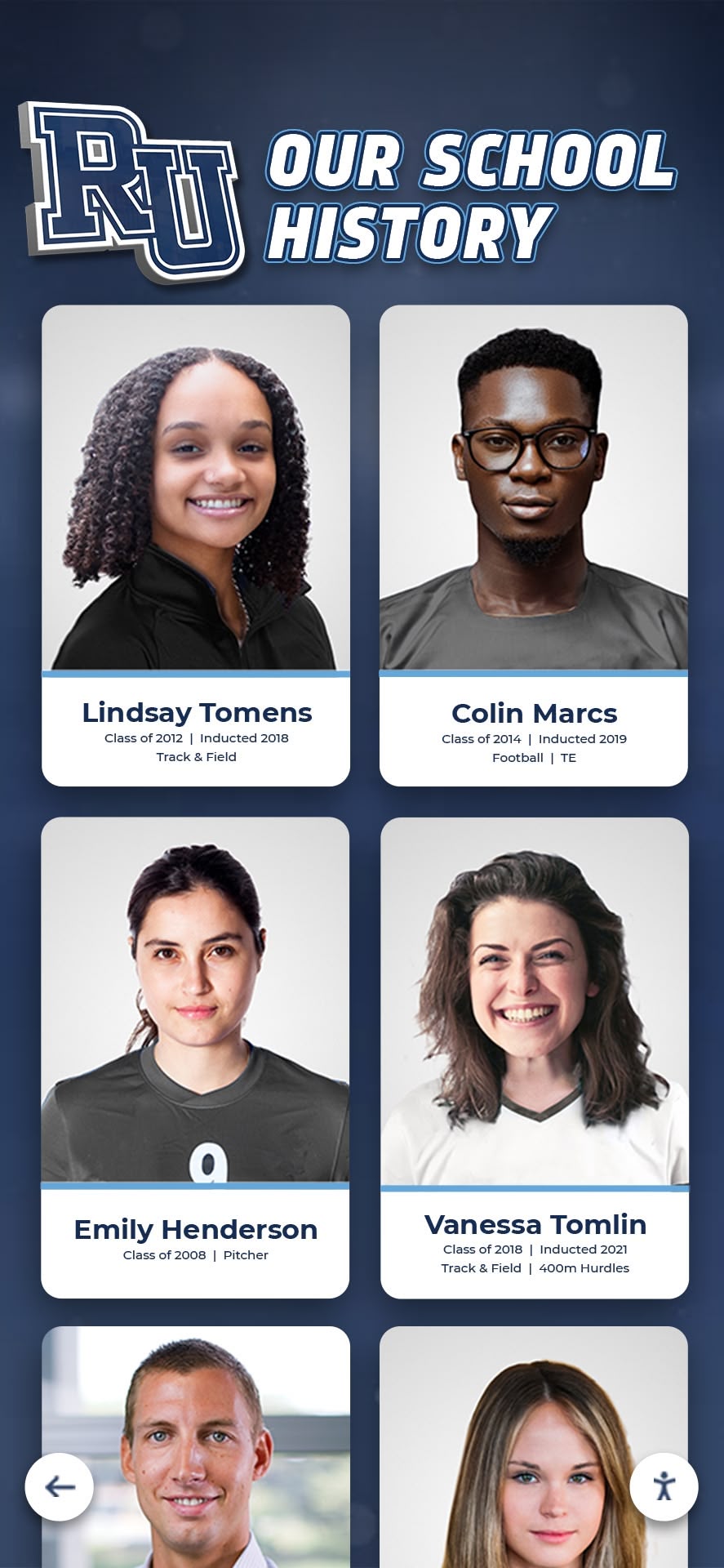
This historical documentation work requires substantial initial effort but results in comprehensive recognition spanning entire program histories rather than just recent years, strengthening tradition and providing inspiration through examples of excellence across generations.
Content Depth Standards:
Establish standards for information included in each recognition profile. Typical chess recognition profiles include player photographs, complete tournament results and achievements, rating histories showing progression, annotated games highlighting brilliant moves or important victories, biographical information about players, post-high-school chess careers or life accomplishments, and coach perspectives on player development and character.
Consistent standards ensure all recognized individuals receive comparable treatment regardless of achievement era or competitive level.
Selecting Recognition Technology
Several technology considerations affect implementation success.
Display Hardware:
Chess recognition displays typically utilize commercial-grade touchscreens ranging from 43 to 55 inches for most school applications, with larger displays suitable for major lobbies or multi-purpose spaces. Commercial-grade displays designed for continuous institutional operation provide reliability that consumer televisions cannot match, while touchscreen functionality enables the interactive exploration that creates engagement advantages over traditional displays.
Mounting options include wall-mounted installations for clean appearances preserving floor space, freestanding kiosks for locations lacking appropriate wall areas, or protective enclosures for high-traffic environments where display protection proves necessary.
Software Platforms:
Recognition software should be specifically designed for achievement celebration rather than general digital signage. Look for platforms offering structured content organization for individuals and teams, powerful search and filtering enabling visitor exploration, multimedia support for photographs, videos, and documents, cloud-based management enabling remote administration, intuitive interfaces requiring no technical expertise, and web portal access extending recognition beyond physical displays.
Solutions like digital walls of fame designed for educational institutions provide purpose-built platforms incorporating features that generic systems lack, ensuring implementations succeed without extensive customization or technical challenges.
Infrastructure Requirements:
Successful installations require basic infrastructure including reliable network connectivity for content management, dedicated electrical outlets positioned for clean installations, and appropriate mounting surfaces or floor space for display placement. Most locations can accommodate these requirements with minimal modification.
Location and Placement Strategy
Display location significantly impacts recognition program effectiveness.
Ideal placement provides high visibility to students, visitors, and families attending events; appropriate environmental conditions without direct sunlight causing screen glare; sufficient space for comfortable viewing and interaction; and symbolic significance within school or organizational facilities demonstrating institutional commitment to chess excellence.
Common successful locations include school entrance lobbies where all visitors see displays, hallways connecting to competition venues or chess club meeting spaces, library or academic areas positioning chess among intellectual pursuits, and athletic facility lobbies when chess recognition integrates with broader athletic programs.
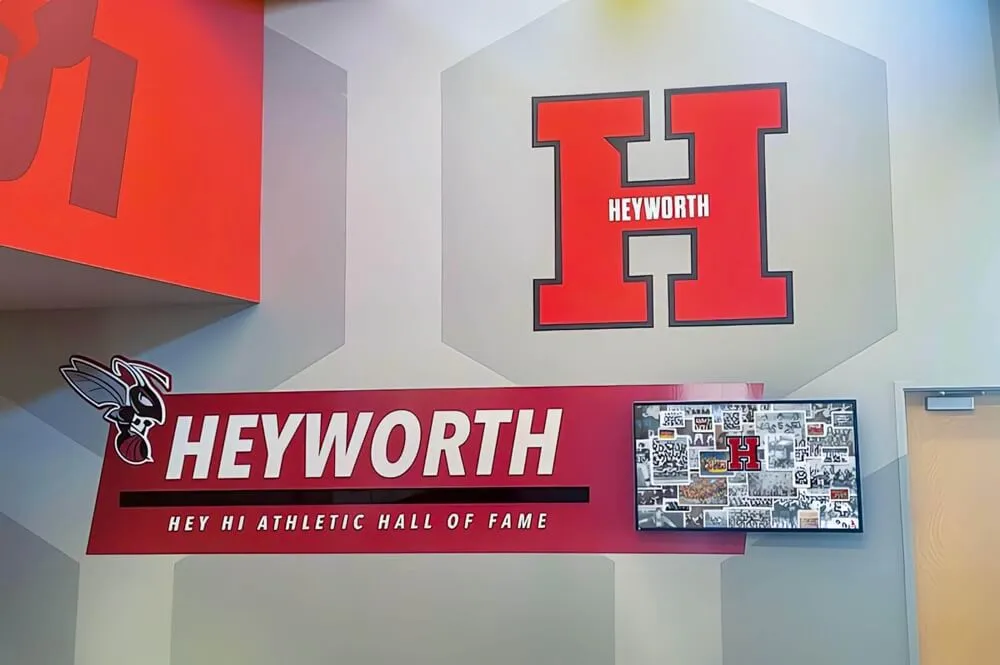
Strategic placement communicates that chess excellence receives celebration equal to other institutional priorities, strengthening program culture and demonstrating values to current players and prospective participants.
Budget Considerations
Chess recognition system costs vary based on scope and approach.
Initial Investment:
Entry-level implementations with single displays and basic content typically require $8,000-$15,000 covering display hardware, recognition software licensing, installation and mounting, initial content development, and administrator training. More comprehensive systems with multiple displays, extensive historical content, or advanced features may require $20,000-$40,000 initial investments.
These upfront costs exceed individual plaque or trophy expenses but deliver dramatically greater recognition capacity and long-term value.
Long-Term Cost Comparison:
Over 5-10 years, digital recognition systems typically cost less than traditional approaches while providing superior capabilities. Traditional recognition requires recurring expenses for new trophies, plaques, and display updates that digital systems eliminate after initial implementation. Many schools report that digital systems achieve cost neutrality within 3-5 years even before accounting for unlimited recognition capacity and enhanced engagement benefits.
Funding Strategies:
Chess recognition funding may come from chess club or booster organization fundraising, parent association support or dedicated giving campaigns, institutional operating budgets recognizing program value, or sponsor partnerships with local businesses supporting chess education. Positioning recognition as investment in player motivation and program tradition often generates enthusiasm and financial support from constituencies invested in chess program success.
Content Development Best Practices
Compelling content determines whether chess recognition systems achieve their engagement and motivational potential.
Player Profile Development
Individual player profiles should balance achievement documentation with narrative storytelling.
Achievement Documentation:
Comprehensive profiles document complete competitive records including tournament results at local, state, regional, and national levels; rating progressions showing skill development over time; notable victories against strong opponents or in important competitions; team contributions when applicable; and special recognitions such as all-state selection or sportsmanship awards.
Personal Narratives:
Beyond bare results, effective profiles incorporate personal elements helping visitors connect with individuals behind achievements. Include quotes from players about memorable games or chess experiences, reflections on what chess taught them beyond competition, anecdotes about funny moments, challenges overcome, or turning points in their chess development, and information about post-high-school chess involvement or life accomplishments showing long-term impact.
These narrative elements transform statistical records into inspiring stories that motivate current players while honoring achievers more meaningfully than results alone could accomplish.
Game Analysis and Position Highlights
Chess recognition offers unique opportunities to showcase actual game content that other sports cannot easily replicate.
Memorable Games:
Include annotated games showing brilliant tactical combinations, important victories in championship situations, model positional games demonstrating strategic mastery, or critical games determining championship outcomes. Provide move-by-move analysis with diagrams showing key positions and explanatory text helping visitors understand what made games notable.
Even visitors with limited chess knowledge can appreciate brilliant combinations when clear explanations accompany position diagrams showing tactical sequences.
Tactical Puzzles:
Consider including chess problems or puzzles from program alumni’s games, creating interactive content where visitors can attempt to find winning moves before revealing solutions. These puzzles engage visitors actively while demonstrating tactical excellence achieved by program players.
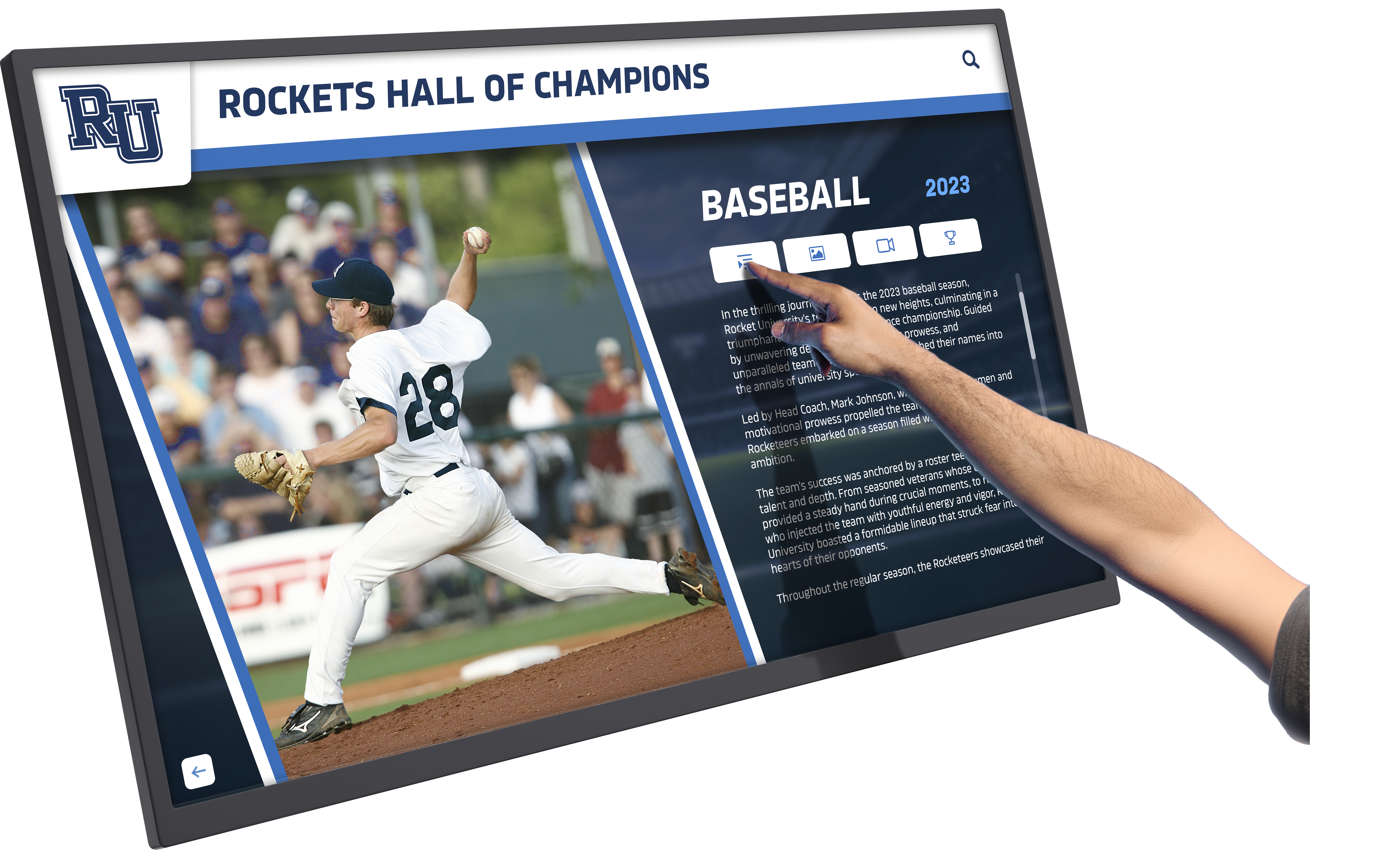
Team and Tournament Recognition
Beyond individual profiles, recognize collective achievements and special events.
Championship Teams:
Create dedicated profiles for championship teams including complete rosters with links to individual profiles, tournament results and critical games, team photographs, coach reflections on team dynamics and development, and historical context about championship significance within program tradition.
Signature Tournaments and Events:
Document important tournaments or special events in program history such as hosting significant competitions, participating in prestigious invitational tournaments, or achieving program milestones. These event profiles preserve institutional memory while demonstrating program development over time.
Connecting Chess Recognition to Broader Educational Goals
Effective chess recognition programs connect to larger institutional missions beyond simple achievement acknowledgment.
Academic Excellence Connection
Chess recognition provides opportunities to emphasize connections between chess excellence and academic achievement.
Academic Accomplishments:
Player profiles should include academic honors, advanced course participation, college acceptances, and career accomplishments showing that chess excellence and academic success correlate rather than compete. This connection helps parents and administrators recognize chess as valuable educational activity rather than mere game or distraction.
Research consistently demonstrates positive correlations between chess participation and academic performance, particularly in mathematics, logic, and critical thinking. Recognition programs that highlight these connections strengthen institutional support for chess programs as educational priorities deserving resource allocation.
Character Development Emphasis
Chess teaches valuable lessons about sportsmanship, resilience, strategic thinking, and gracious competition that extend far beyond games.
Character Recognition:
Include recognition categories specifically honoring character qualities such as sportsmanship in victory and defeat, mentorship of younger players, dedication through challenges or setbacks, and gracious competition showing respect for opponents. These character-focused categories communicate that chess programs value personal development alongside competitive success.
Quotes and stories about how chess shaped character, taught important life lessons, or influenced approaches to challenges help demonstrate chess’s role in youth development beyond tournament results.
Alumni Connection and Engagement
Alumni legacy digital walls for chess programs create lasting connections with program graduates.
Post-High School Updates:
Maintain connections with chess alumni by regularly updating profiles with college chess participation, career accomplishments, continued chess involvement as coaches or organizers, and willingness to mentor current players. These ongoing connections demonstrate program impact extending across lifetimes while providing role models showing diverse paths chess involvement can take.
Alumni Mentorship Integration:
Digital recognition platforms can facilitate connections between current players and program alumni. Include contact information or social media links for alumni willing to engage with current students, creating mentorship opportunities that strengthen both program culture and alumni relationships with institutions.
Measuring Recognition Program Success
Systematic assessment demonstrates recognition value and identifies improvement opportunities.
Engagement Metrics
Digital recognition systems provide valuable analytics revealing actual usage patterns.
Visitor Interaction Data:
Track metrics including total visitor sessions, average interaction duration, most-viewed profiles revealing popular content, search patterns showing what interests visitors, and return visitor rates indicating sustained engagement value. Review analytics quarterly to identify trends and optimize content based on what actually engages audiences.
Community Feedback:
Supplement quantitative analytics with qualitative feedback from players, parents, alumni, and visitors about recognition impact and value. Surveys, interviews, or informal conversations reveal perception gaps and improvement opportunities that usage statistics alone might not indicate.
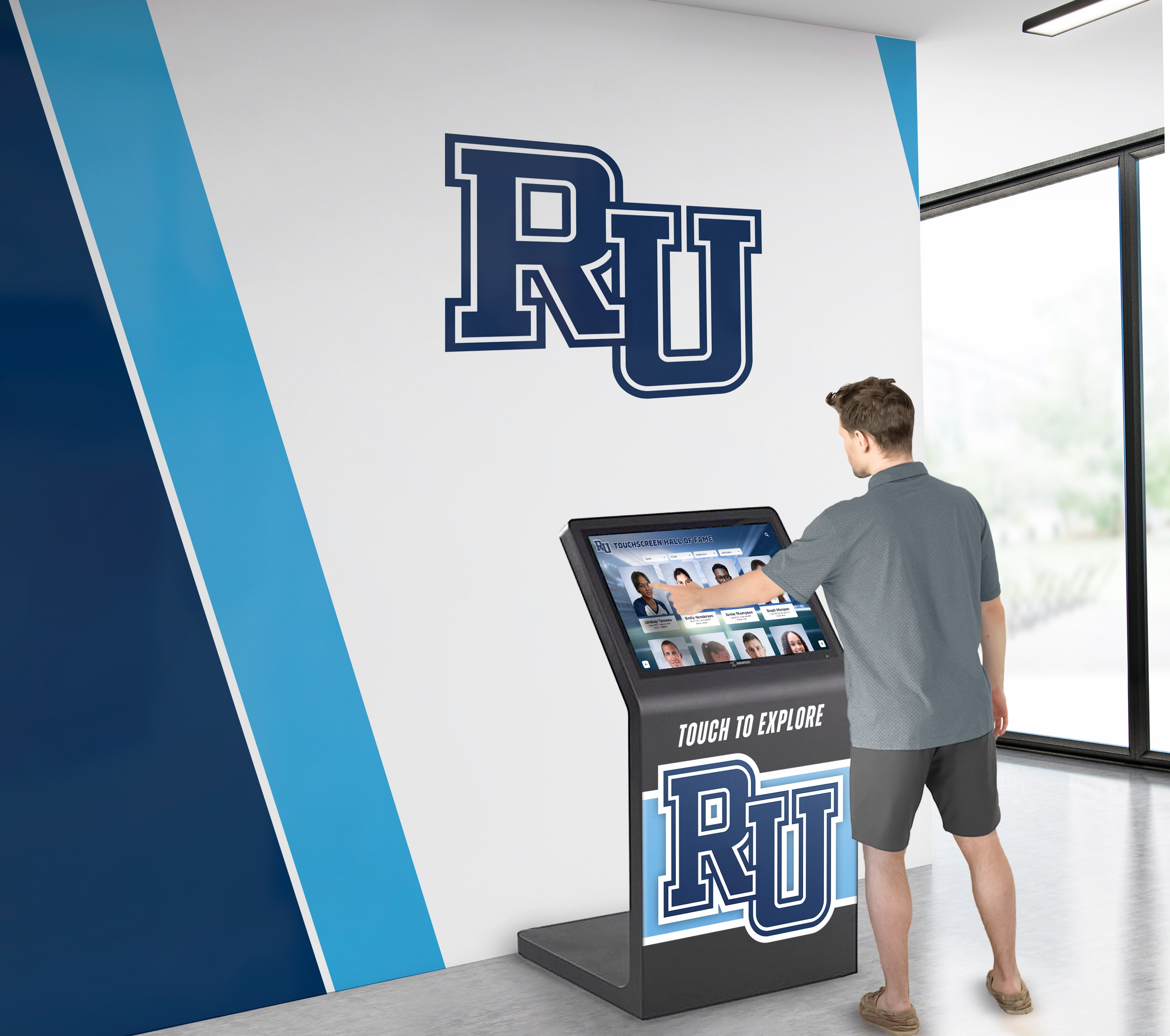
Motivational Impact Assessment
The ultimate recognition program success measure involves actual influence on current player motivation and program culture.
Player Perspective:
Survey current chess program participants about recognition awareness, whether displays influence their motivation, if historical achievements inspire their development, and whether recognition contributes to program pride and culture. These direct player perspectives reveal whether recognition achieves its fundamental purpose of inspiring excellence.
Recruitment and Participation:
Monitor program participation trends, new player recruitment, and retention rates. While many factors influence these metrics, positive trends following recognition implementation suggest that celebrating achievement creates cultures where players want to participate and remain engaged over time.
Broader Institutional Benefits
Chess recognition programs often generate value extending beyond player motivation.
Prospective Family Impression:
Prospective families visiting schools form impressions about institutional values and priorities based on everything they observe. Modern chess recognition displays communicate that schools value intellectual excellence, celebrate achievement across diverse domains, invest in program quality, and care about individual recognition—all messages that positively influence enrollment decisions for families prioritizing academic and intellectual environments.
Community Pride:
Comprehensive chess recognition contributes to broader school or organizational pride by documenting excellence and tradition across generations. This pride strengthens community identity while demonstrating institutional commitment to celebrating accomplishment across all domains of student success.
Conclusion: Celebrating Chess Excellence in the Modern Era
The World Chess Hall of Fame demonstrates how effective recognition combines historical preservation with interactive engagement technology to celebrate excellence while inspiring future generations. Schools and chess organizations implementing their own recognition programs can draw valuable lessons from this premier institution about creating systems that honor achievement comprehensively, engage visitors meaningfully, and inspire current players effectively.
Modern interactive display technology transforms chess recognition from trophy cases and wall plaques that quickly reach capacity into unlimited platforms showcasing complete program histories. These systems enable rich multimedia storytelling impossible with traditional displays, facilitate interactive exploration creating genuine engagement, eliminate space constraints that force difficult recognition decisions, reduce long-term costs through elimination of recurring plaque and trophy expenses, and demonstrate institutional commitment to celebrating intellectual excellence across generations.
Whether implementing recognition for the first time or modernizing existing programs that have outgrown traditional approaches, digital interactive displays provide practical solutions that honor traditions while embracing technological possibilities that serve program missions more effectively than physical artifacts alone could achieve.
Solutions like Rocket Alumni Solutions provide comprehensive platforms specifically designed for educational chess recognition, combining intuitive content management with engaging user experiences that inspire players while celebrating achievement. These purpose-built systems enable schools and organizations to create recognition programs that properly honor chess excellence while building program cultures where current and future players understand that sustained excellence receives lasting celebration matching the significance of their accomplishments.
Ready to transform how your chess program celebrates achievement? Explore how modern interactive recognition displays can honor your players more comprehensively while inspiring the next generation of chess champions in your program. Your players achieve remarkable things through dedication, strategic brilliance, and competitive excellence—ensure those achievements receive the recognition they truly deserve through modern systems that make chess excellence visible, accessible, and inspirational for your entire community.
